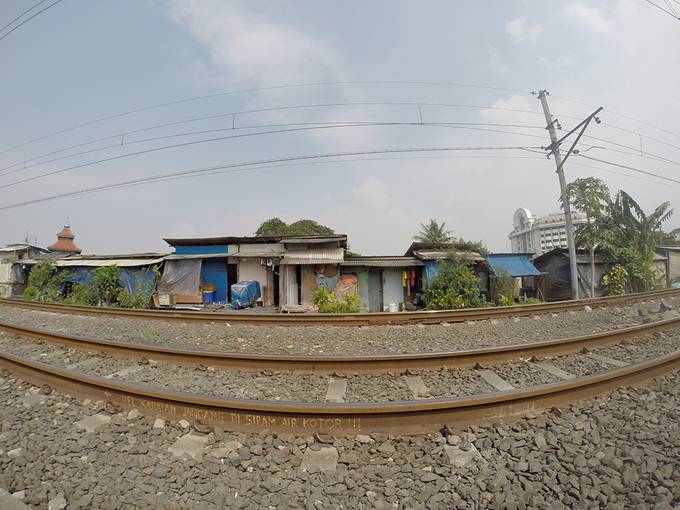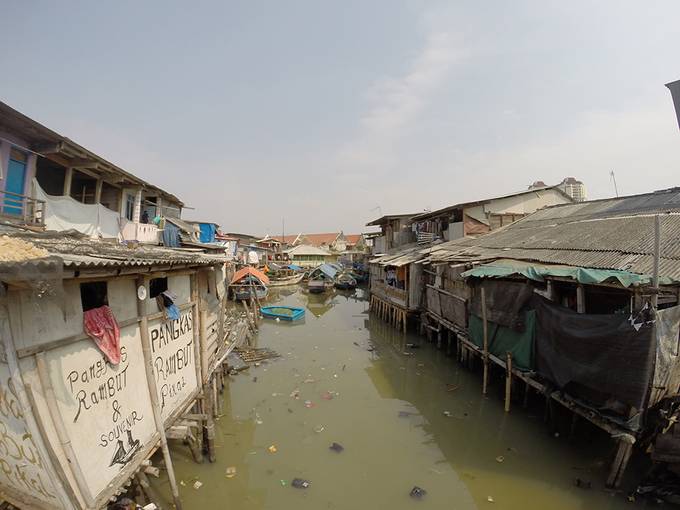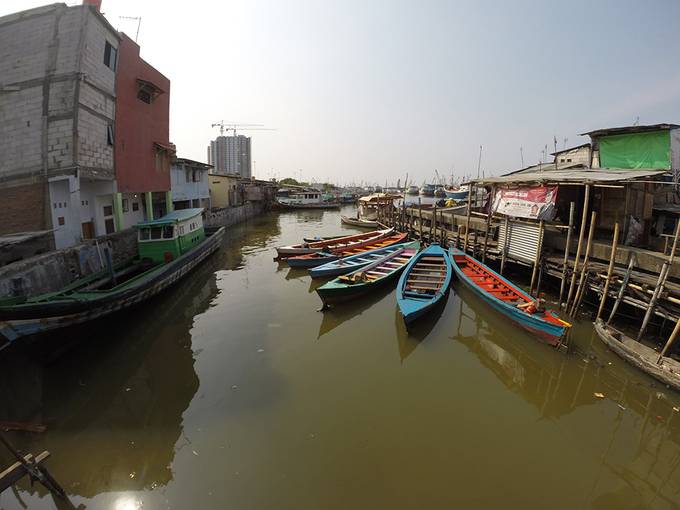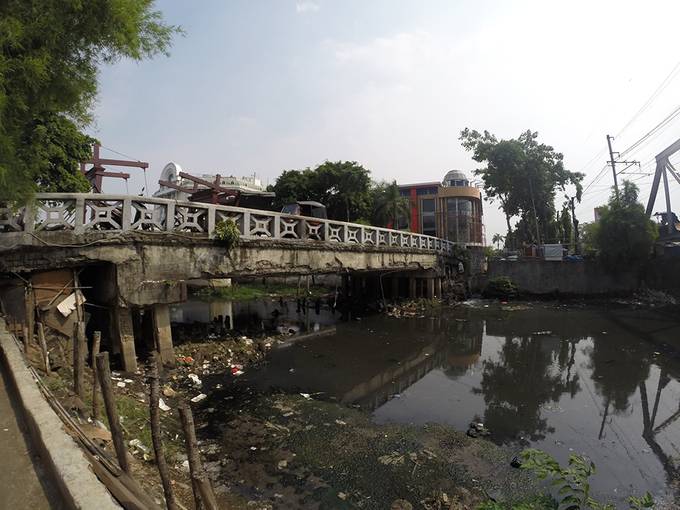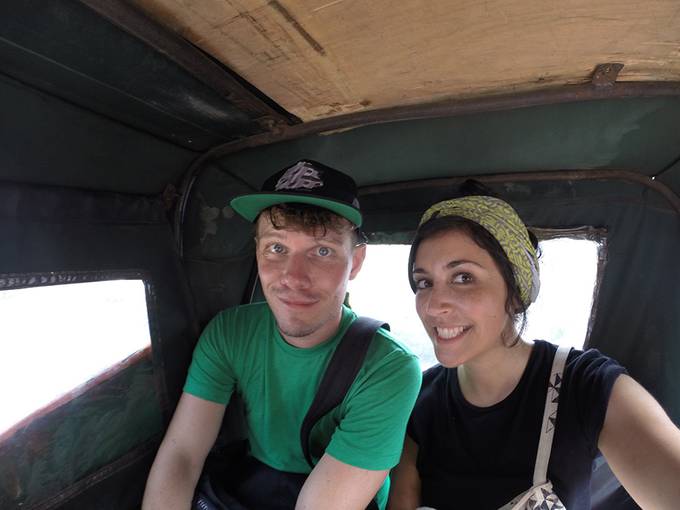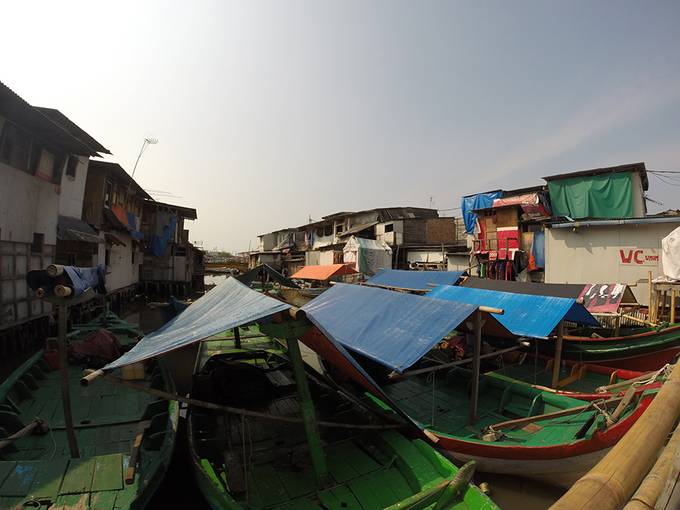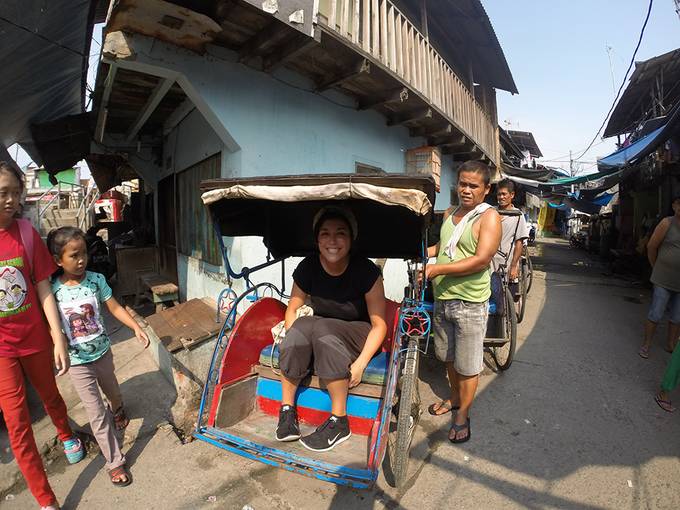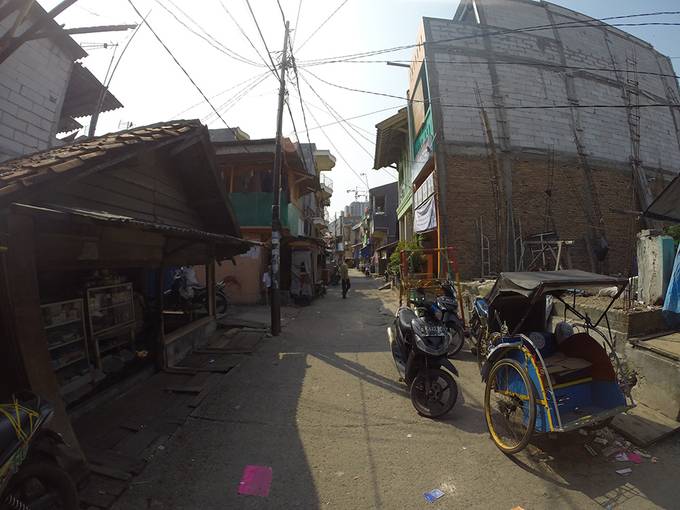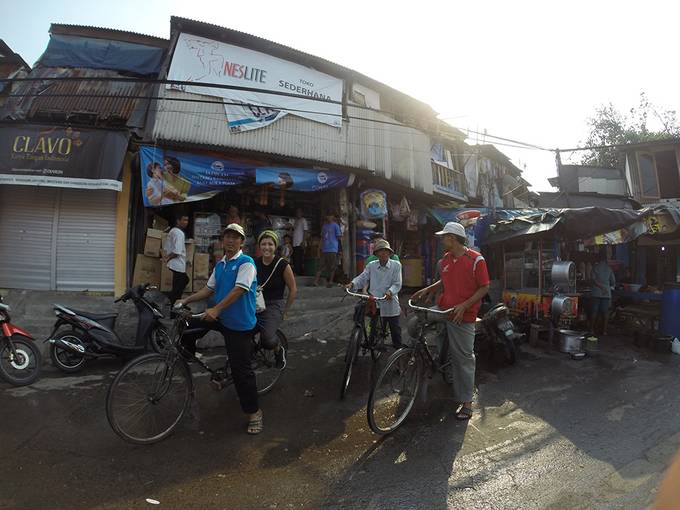The 'hidden' Jakarta
Jakarta gets a pretty bad rap, even the guidebooks advise you to skip it, so we weren't really sure what to expect. But actually, we kinda liked it. We stayed on Jalan Sabang, a busy road with lots of street food stalls and cute coffee shops, and after six weeks in the much more modern Malaysia, we enjoyed being somewhere a little rougher around the edges.
On our first full day we decided to do a tour. Not our usual travel style, especially in a city, but Jakarta is a tough nut to crack and we thought we could do with some help. It turned out to be a great day exploring the city and chatting with our guide Parlin about the history of Jakarta, religion, the problems it faces and the presidential election.
After exploring some of the sights in the old town, we headed to two of the kampung slum areas. The ones we visited are by no means the poorest areas in the city, Parlin described the people we met as poor, and there are two rungs below this on the ladder, very poor and extremely poor. The 'villages', as they're known, are typically in areas that other people would not want to live in, the first one we went to is next to a railway line.
The next community we visited is made up of small huts built around one of Jakarta's many canals. There are narrow covered alleyways throughout the area and tiny convenience stores and makeshift restaurants amongst the houses.
One thing that really stood out was the amount of rubbish everywhere. The areas are all illegal settlements (although the government does provide electricity to the huts), so there is no waste collection.
During the day we tried out all the different types of public transport, TransJakarta buses, trains, tuk tuks, becaks and bicycle taxis – we tried them all.
The bicycle taxi involved perching on a little seat on the back wheel and clinging on while the driver speeds down highways across lanes and lanes of motorbikes. Scary, but so exhilarating at the same time!
The tour company has received some criticism from the media for being 'poverty tourism', but the organisation is very involved in helping the communities that they take visitors to.
My take on it is that it's hard to understand the realities that people live through without seeing it for yourself, and education is the first step to change. Everything was handled really sensitively by our guide and we ended the day with a new understanding of life in Jakarta.
More info here: Hidden Jakarta.
—Yasmine
